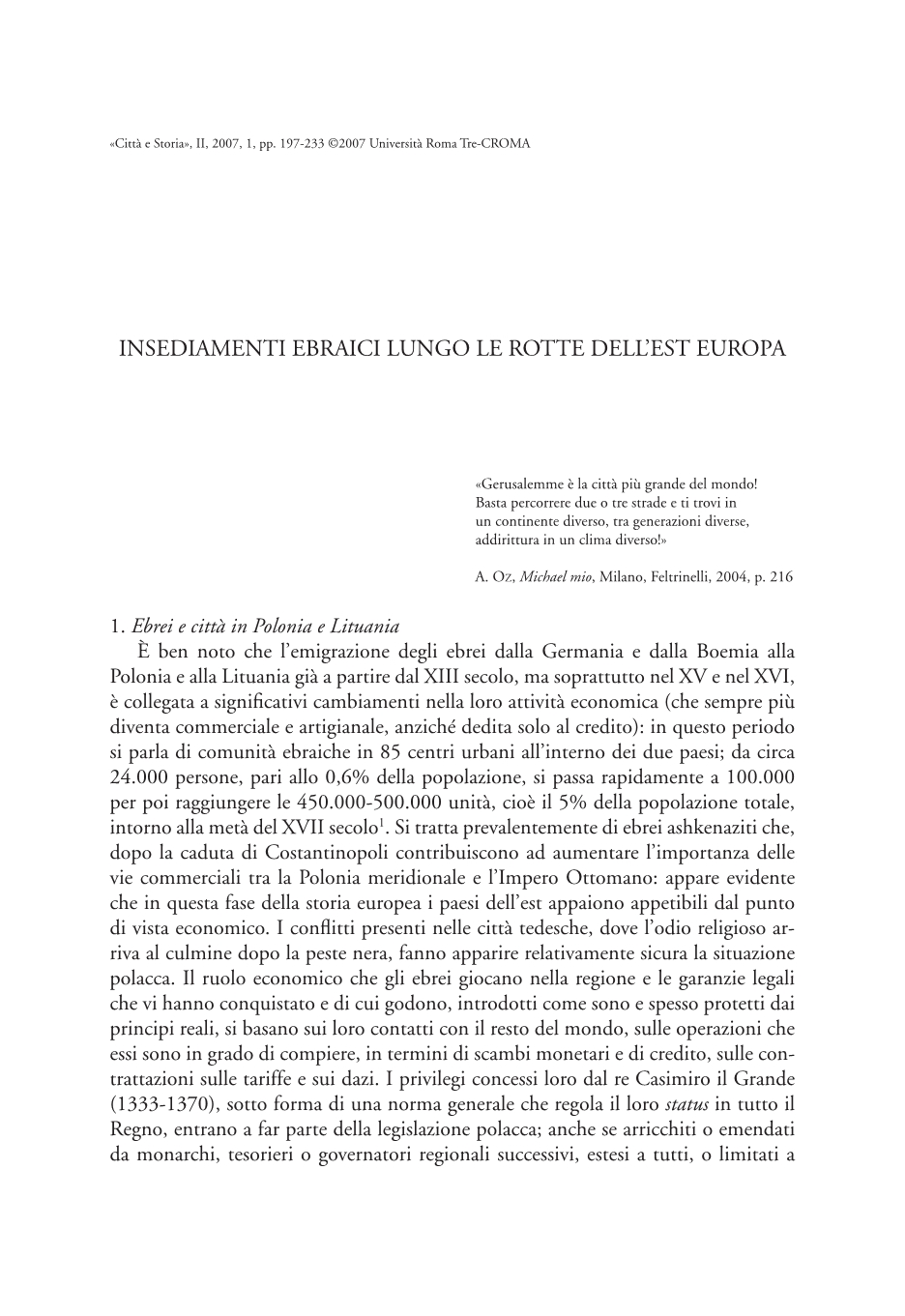Indice dei fascicoli
CITTÀ & STORIA » 2007/1 » La città cosmopolita
ISSN 1828-6364
Calabi Donatella
Insediamenti ebraici lungo le rotte dell'est Europa
pp.197-233, DOI 10.17426/53096
Articoli
Abstract: In the Polish Kingdom and in the western territories of the Great Duchy of Lithuania, during the XVI and XVII centuries, a great jewish presence identifies several urban settlements specific and recognizable, usually placed near to the market squares. The urban jewish communities, very flexible, caracterized by a great mobility and a considerable degree of economical prosperity, are at the base of the “cosmopolitism” of these regions in the early modern times.
The domestic architecture of the jewish districts is mainly visible in terms of density: from the home, to the street, to the neighbourhood and the urban fabric we can perceive «a city within the city» (with a certain degree os separation), not in the quality of the architecture (often it is a wooden construction), but in the exploitment of the land. In these settlements we can find common characters in the localization of the public activities: the synagogues, the assistancial places, the confraternities, the schools, the mikveh, even sometimes the cemeteries are distributed along a street, called the «Jewish street» (Uliza Zydowska), often the continuation of an ancient market square. Finally, not a particular spacial organization, but a land use (from the juridical regime, to the building density) visibile in the urban context. It is not a case if very often the documents refer to the expression oppidum Judeorum.

Referenze
- download: n.d.
- Url: http://archivio.centroricercheroma.it/?contenuto=indice-dei-fascicoli&idarticolo=750
- DOI: 10.17426/53096
- citazione: D. Calabi, Insediamenti ebraici lungo le rotte dell'est Europa, "Città & Storia", II/1, pp.197-233, DOI: 10.17426/53096

